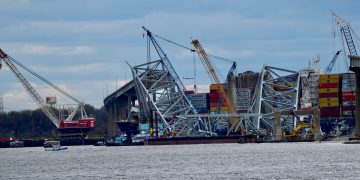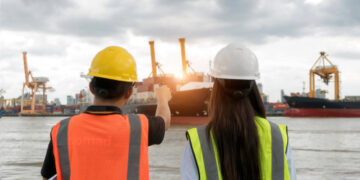Dr. Kevin Ghirxi, Head of the Marine Safety Investigation Unit in Malta, emphasizes the necessity for the maritime industry to delve deeper into understanding maritime operations and procedures. This approach, termed ‘embedded discovery,’ aims to illuminate both the implementation processes (‘how’) and the underlying reasons (‘why’) for performance variabilities onboard.
With over 30 years of experience in the maritime industry, Kevin highlights the significant progress made in enhancing safety measures. However, he underscores the crucial need for a shift in mindset to support innovative management strategies for maritime safety. He emphasizes the importance of abandoning the tendency to blame seafarers and the misconception that a focus solely on lost time injuries is sufficient to cultivate a robust safety culture.
SAFETYSE4: When it comes to incident investigation, what are the key challenges and what should be industry’s top priorities?
Kevin Thomas Ghirxi: The underpinning ontological and epistemological properties of a safety investigation are anything but related to the apportionment of blame. The challenge, which the industry has is two-fold: there is a tendency to expect that a safety investigation judges and blames whoever, for ‘causing’ an accident – in the absence of which, the safety investigation may be labelled as falling short of this expectation. The other challenge is that part of the industry that reads safety investigation reports, knows too well that the mindset of the safety investigators is not to apportion blame; nonetheless, it does its outmost to extrapolate blame and perhaps even transform the safety investigation report from a vehicle to disseminate safety lessons to a blaming tool. As such, that erodes confidence in safety investigations and jeopardizes the dissemination of safety lessons.
S4S: From your professional experience, what are the most important factors to consider when investigating maritime accidents?
K.Th.Gh.: Although the dynamics of an accident are analysed by safety investigators, they must be seen through the eyes of the sharp and blunt ends, and not through the safety investigators’ eyes, given that any actions, inactions, and decisions taken at the time, would have been influenced by the tools, bounded rationality, and the prevailing context which, is often characterised by multiple, conflicting goals. Then, equally important, the safety investigators must appreciate that the way things are seen after the accident (with the benefit of hindsight), is not necessarily the way the same things were being seen before the accident happened. All this is critical, given that causes of accidents are not something which are unearthed and stumbled upon – they are constructed by the safety investigators.
S4S: What are the key lessons learned from industry’s recent accidents that have been investigated by the MSIU?
K.Th.Gh.: Naturally, there are various key lessons in every safety investigation, depending on the nature of the accident under investigation. Therefore, safety lessons vary. However, there is a ‘general’ key safety lesson, which I consider to be endemic to safety investigations, and which I hope it comes across after safety investigation reports are read. When we compile safety investigation reports, we do our utmost to send the message that there are gaps between work as prescribed and work as carried out – and this is not a phenomenon which the MSIU has discovered; Professor Erik Hollnagel has been expounding on this matter since 2012. Neither it is a phenomenon confined to the maritime industry. The conveyed message is that seafarers do not cause accidents. Rather, they are the ones who mitigate daily challenges by trying to bridge these gaps; seafarers are needed to create safety.
S4S: Are you satisfied with progress made towards improving safety performance within the maritime industry? What would you like to see up to 2030?
K.Th.Gh.: I have been part of the maritime industry for over 30 years, and I have no doubt that the industry has come a long way towards improving safety. That said, we need to keep evolving even in our thoughts, beliefs, and practices to always remain ahead of the curve. I would like to see a global effort to work towards innovative management strategies of maritime safety. This will necessitate any shipping company to operate an adequately calibrated risk model, which acknowledges that, whilst adaptations are an essential property in the dynamic maritime environment, the monitoring of these very same adaptations is equally important to ensure that the organisation remains in control of its own operations.
S4S: What is your wish list for the industry and/or regulators and all parties involved for the shipping industry to enhance safety culture onboard?
K.Th.Gh.: I have two wishes related to safety culture: eradicating the belief that safety culture falls squarely into the laps of the seafarer when, really and truly this is organizational; and the misconception that safety culture is achieved by focusing on lost time injuries – regretfully, it is almost an obsession because there is the belief that the lower the lost time injuries, the safer the organisation must be. This cannot be farther from the truth. It reflects an erroneous mind frame that safety is something which an organisation has (and therefore can be compromised by some negligent seafarer), when safety culture is actually a product of what the orgnisation does to understand how seafarers manage day-to-day complexities and ambiguities to reach the goals of that very same organisation.
S4S: If you could change one thing from your perspective, what this one thing would it be and why?
K.Th.Gh.: The way society holds people accountable for professional mistakes. One of my favourite authors in safety science deliberates on accountability and culpability in a publications of his and explains how people can be held accountable in innovative ways, to inspire a blame-free industry. He posits how people can be held accountable by ensuring that they are enabled to account their insight of the story and on how the accident evolved. Of course, that would require a paradigm shift in the way society signifies human error and understands accident dynamics.
S4S: Do you have any projects/ plans that you would like to share with industry stakeholders?
K.Th.Gh.: The main role of the MSIU is to investigate accidents – the reactive component of enforcement of international maritime conventions. The aim is to contribute to safety – hindsight contributing to foresight. However, it is our plan in the medium term to engage in a more proactive function, albeit based on the accumulated accident data, which is stored in our system, and engage either directly or indirectly in safety studies. Whilst statistical analysis is important, one should not omit qualitative studies, which may also provide detailed insights of system complexity and contribute to the dissemination of safety lessons to the maritime industry.
S4S: What is your key message to industry stakeholders to enhance safety at sea?
K.Th.Gh.: Recently, I participated in a lecture delivered by one of my preferred safety scientists. During the discussion, reference was made to methods applied by managers, to understand what is going on in their organisation and what is required by frontliners in the day-to-day activities of organisations. Most managers would rely on safety audits. It was explained that to a certain extent, there may be merit to do so, but a very effective method complementing safety audits is (what he called) the single person, embedded discovery. In our industry, this approach would necessitate a single company representative going on board and immerse oneself in the frontline to understand how work is done. The aim is to enhance the understanding of the ‘whys’ and ‘hows’. Embedded discovery would enable a thorough understanding of how procedures are interpreted, understood, and implemented on board and even shed light on performance variabilities, which may otherwise be simply labelled as procedural violations.
The views presented hereabove are only those of the author and do not necessarily reflect those of SAFETY4SEA and are for information sharing and discussion purposes only.

































































